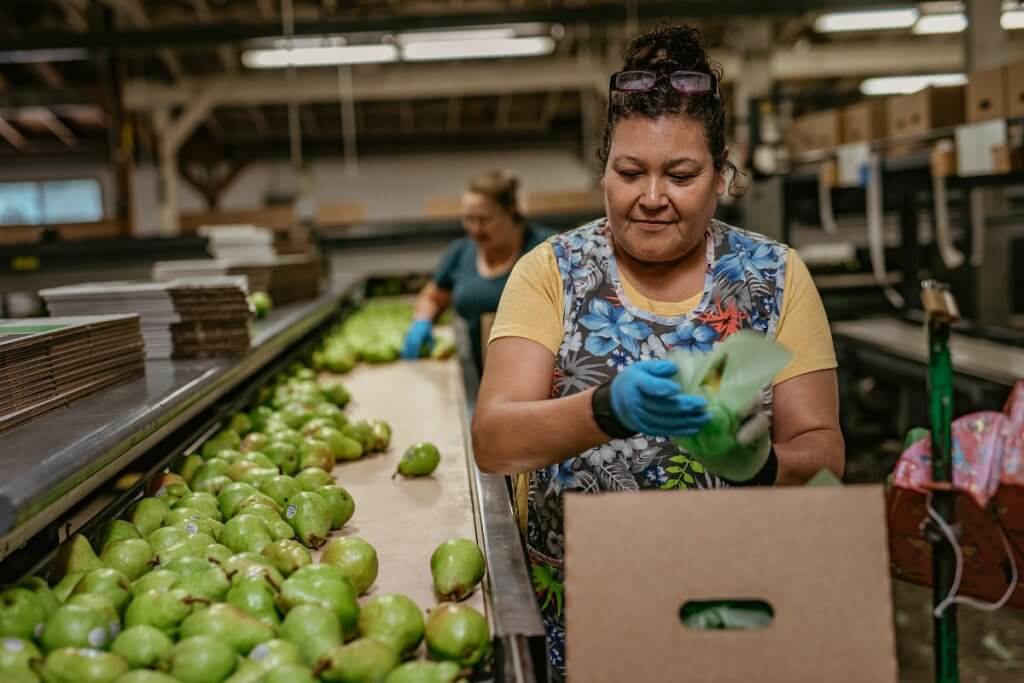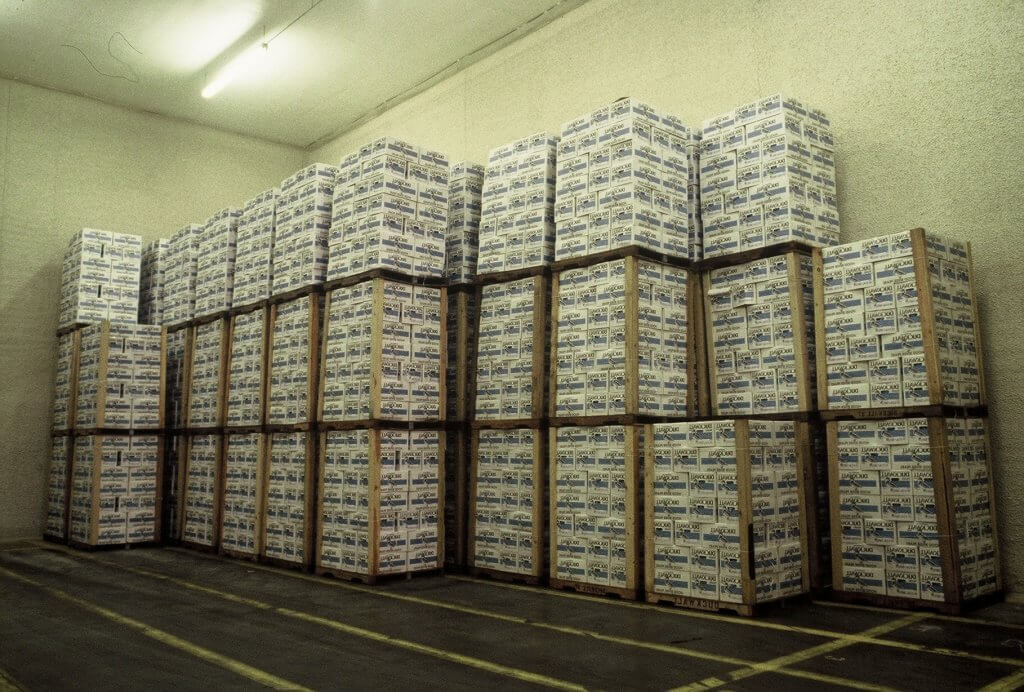Growing
The rich volcanic soils, long, warm days, and cool nights of the Pacific Northwest creates an ideal climate for growing pear trees. But well before the pears are plucked from the trees at the beginning of fall, pear growers have prepped and pruned the trees to help make sure they deliver the perfect pear.
When spring rolls around, the trees come alive again: growers kick off the season by bringing in bees to pollinate the pear blossoms starting to decorate the branches. Later, as the first of the pears begin to grow, the grower will thin the incoming baby fruit to maximize where the tree spends its limited energy and to make sure that each branch has plenty of room to grow into the biggest and best pears possible.
Come summer, the branches get heavy and full, almost cracking under the burgeoning bounty, so the grower props the branches up to safely support them, monitors the orchards for pest control, and begins irrigation so the thirsty trees get plenty of water during the warm summer days. By the time summer ends, farmers are monitoring the weather, bringing in fans to move air around and prevent fungus. The cycle has come back around: it’s time for harvesting.
Harvesting
The perfect pear can be crisp and green, it can be yellow and buttery. But no matter how you prefer your fruit in the end, all pears are picked at the same time: when they’re fully mature but not yet ripe. That’s because unlike cherries and apples, pears do best when they are plucked at the peak of flavor, even though they haven’t yet softened or sweetened. While you may have enjoyed the occasional tree-ripened pear, the best texture – smooth and juicy –comes from letting them ripen after picking.
Starting as early as August, pickers carefully harvest each pear by hand, climbing up special three-legged ladders to reach up into trees and assess the individual fruit for its readiness. Ripe fruit is put into the bags pickers wear, which can weigh forty or more pounds before they get carefully emptied into specialized orchard bins designed to prevent bruising. The number of people working in the orchard skyrockets as pickers move through the orchards in search of fruit at the proper stage, often helping out their neighbors in addition to their own crop. They begin with the Bartletts, the best-known and most common pears, but as the season moves on, they’ll pick the sweet Anjous, before moving onto late season varieties like the creamy Comice and aromatic Bosc as it turns toward winter.

Packing
The delicate care of the fruit—from the moment its picked until it reaches the person who will eat it—is designed to ensure the best possible quality. As the pickers work their way through the orchards, they gently transfer the picked fruit from picking bags into orchard bins. Because pears, particularly at this stage of the season, have super sensitive skin, there’s no machine that can do this work without bruising the fruit—harming how it looks, but also how it ripens and tastes.
Once the pears reach the proper reduced core temperature, they are transported by water, again to prevent bruising, to be sorted and separated by size and grade before being hand-packed into boxes. Each pear is carefully packed, either onto padded beds in modern boxes or individually wrapped to protect the skin before it goes into the pack cart, ensuring it will have a comfortable, first-class ride to its destination.

Shipping
After the pears are packed snuggly in their boxes, they head to special storage rooms for a little nap. The temperature and atmosphere-controlled environment holds them in this sleep state until the pears are ready to wake up and hop on a truck or train car for the journey all over the U.S., as well as, for about one-third of the crop, a longer journey to another country.
Selling
While most fruit is sold ripe at the store, because of pears’ unique off-tree ripening, you can sometimes purchase your pears before they’re ripe and leave them out to ripen until you’re ready to eat them. Before you buy, you’ll want to know how to tell just how ripe that fruit currently is. For many fruits, you check the ripeness by giving the outside a gentle squeeze, but pears tend to ripen from the inside out, so that won’t help you much. Instead, check the neck—apply gentle pressure around the stem end with your thumb to see how firm it is there. If it yields to pressure, then it’s ripe and ready to eat!
When your pears are ripe, you can refrigerate them right away to make keep them fresh and delicious for a few more days. But if they are not yet ripe, you can confidently buy them to set out at room temperature (around 70°F) until you’re ready to eat them—and a bowl of pears ripening on a table does double duty as still-life decoration.